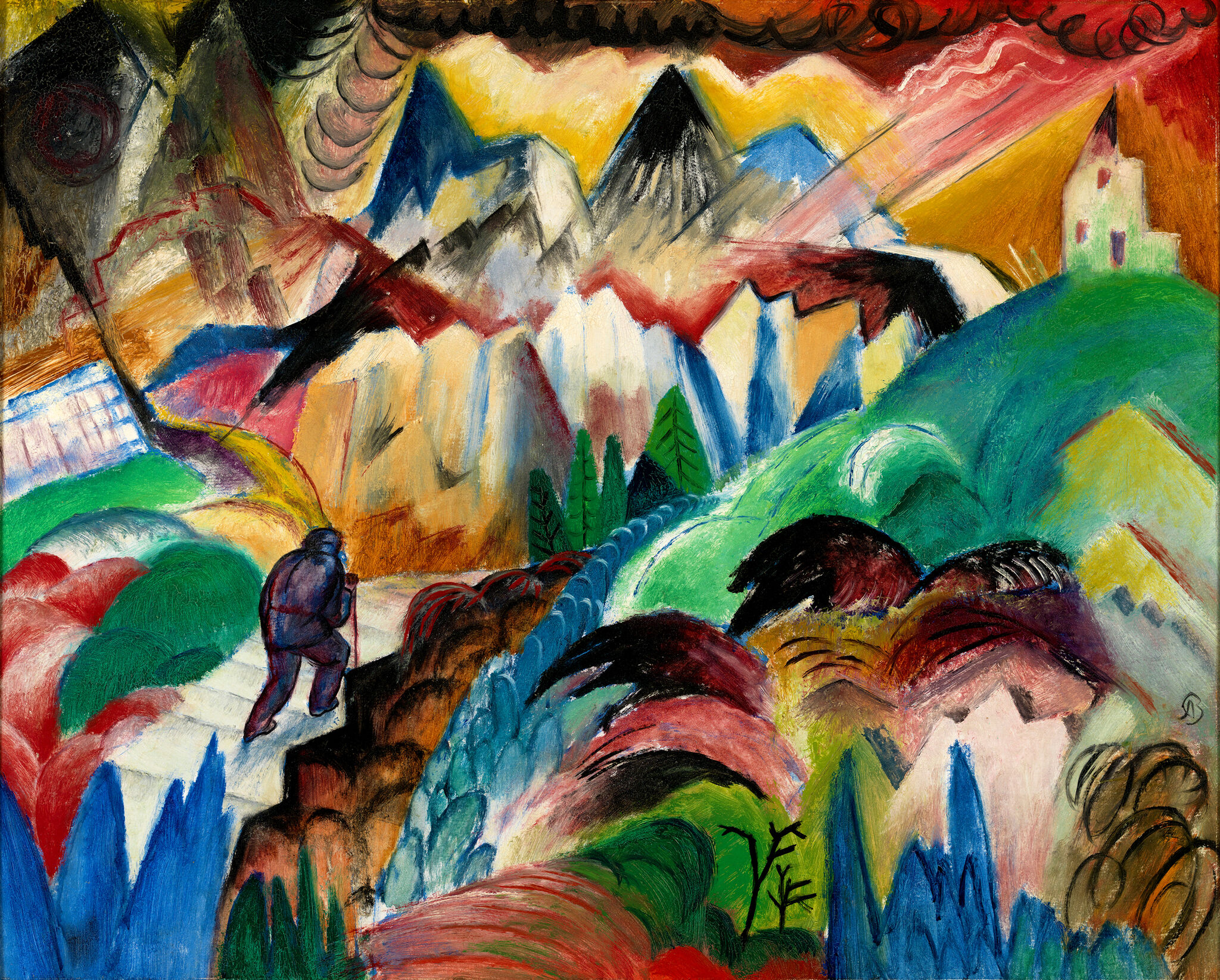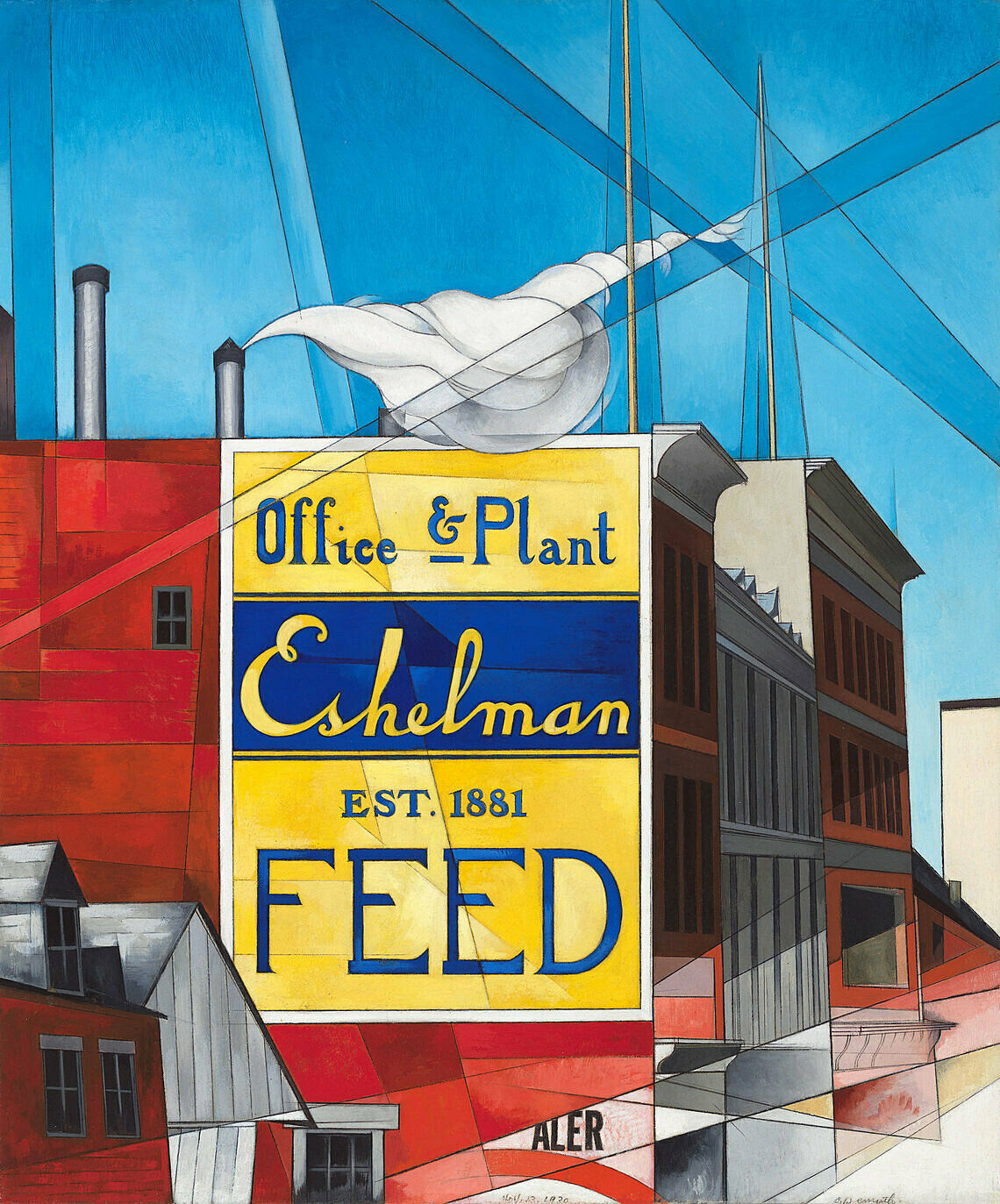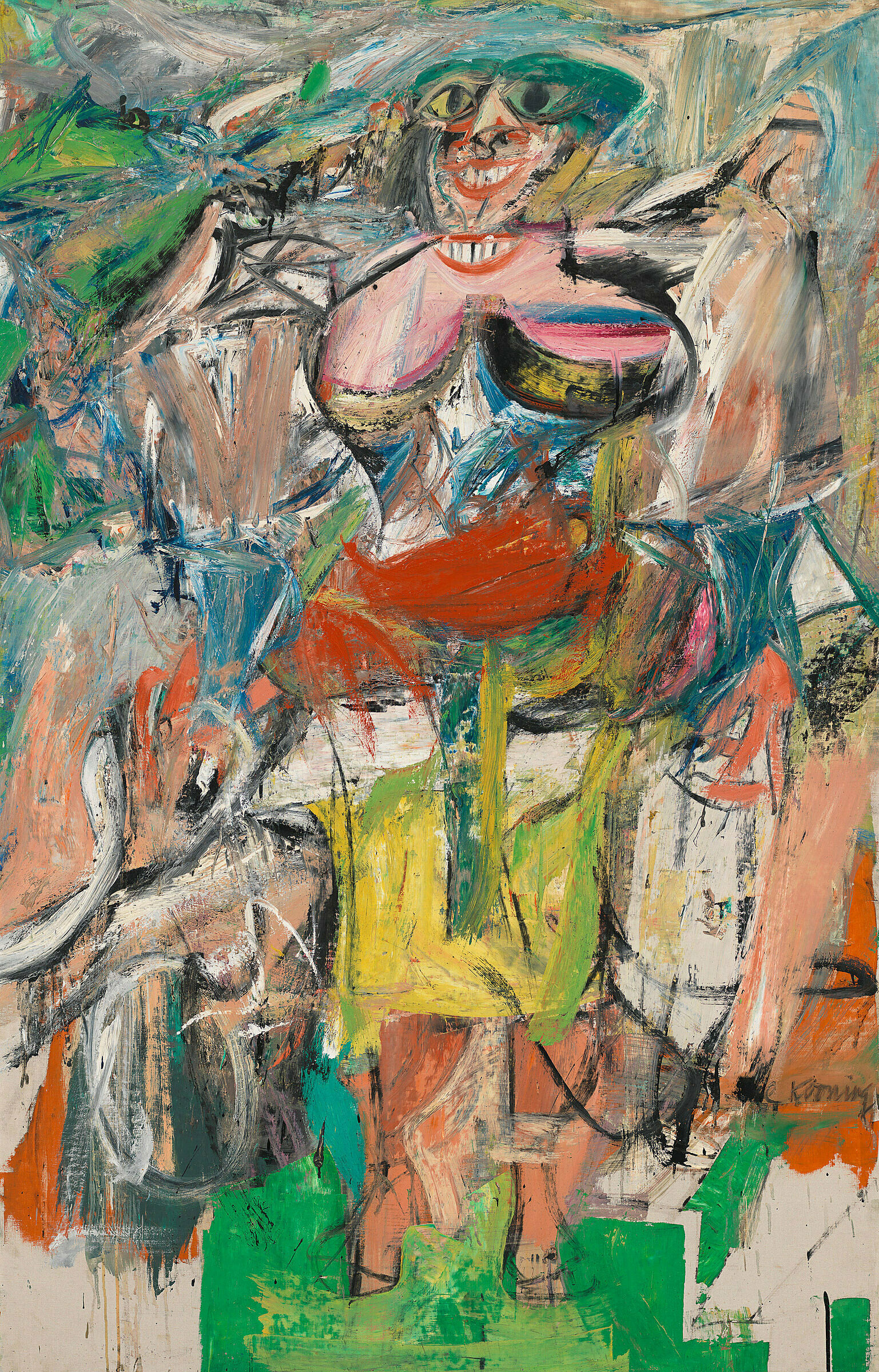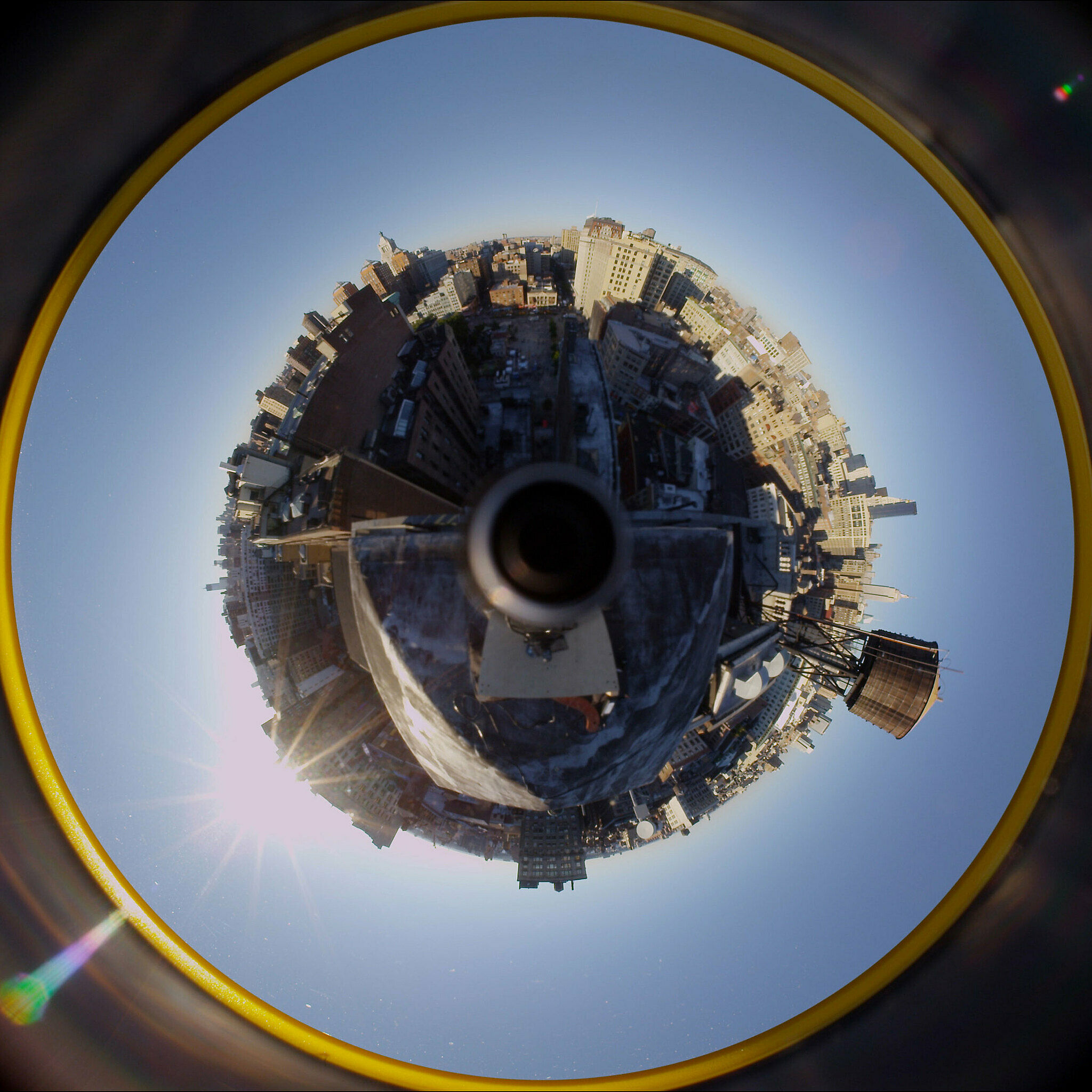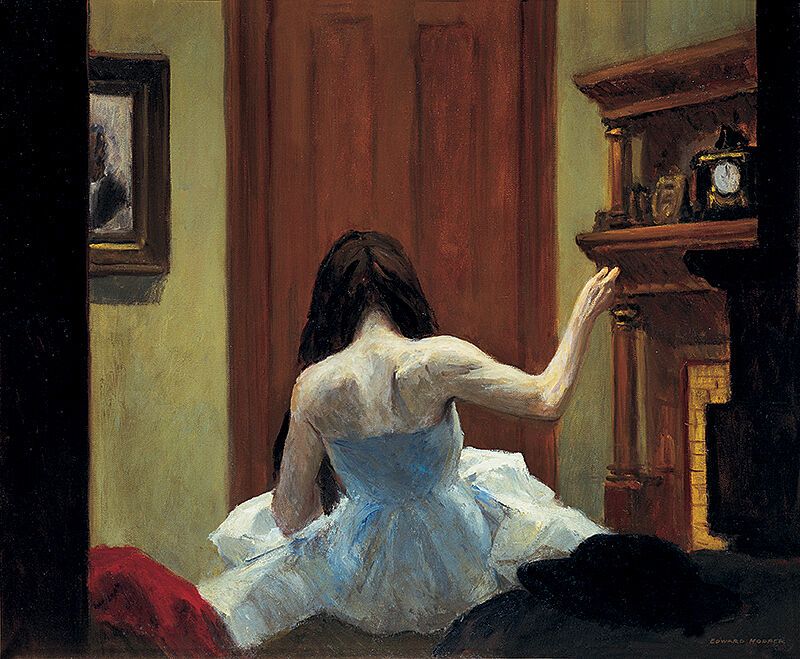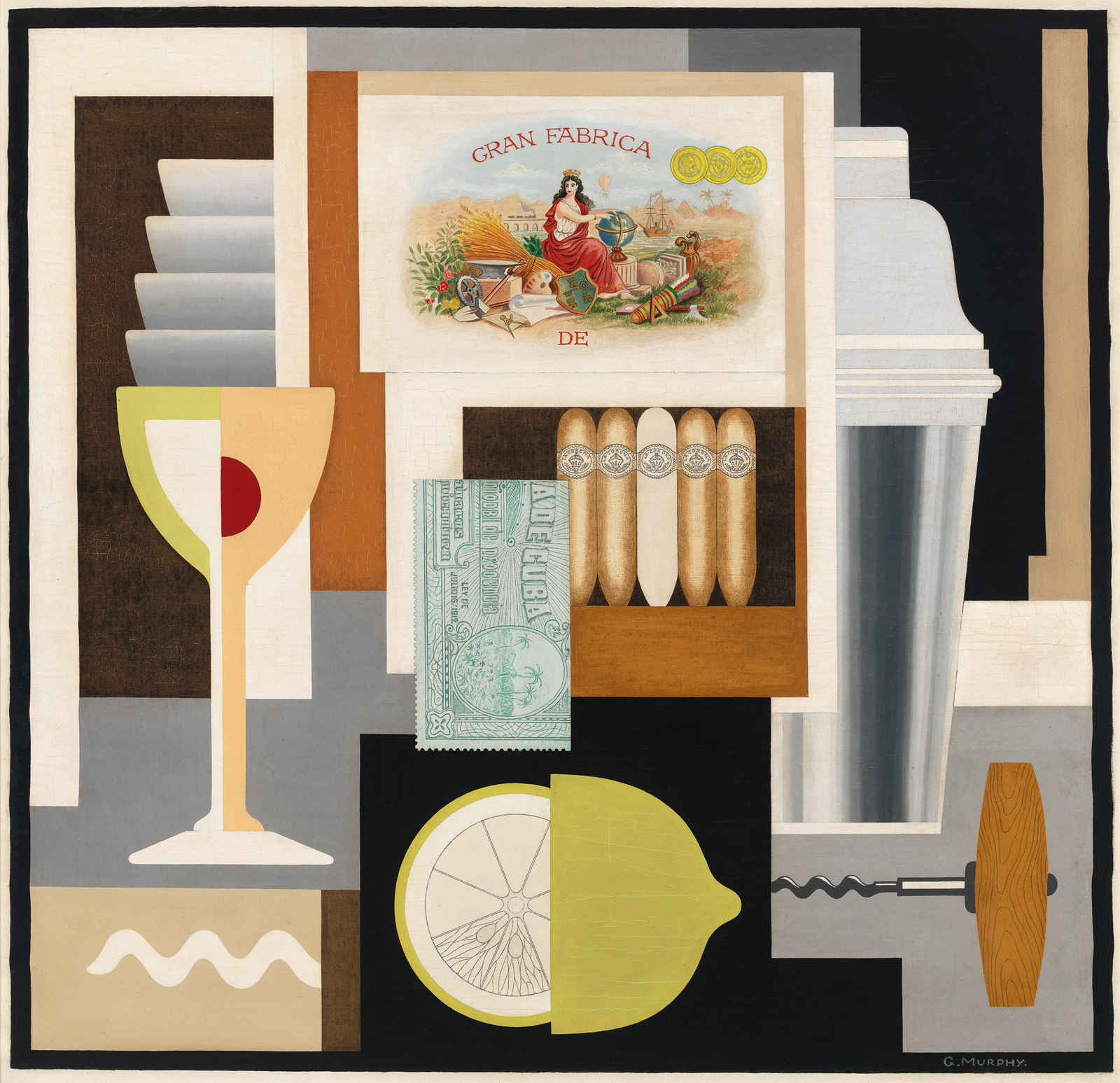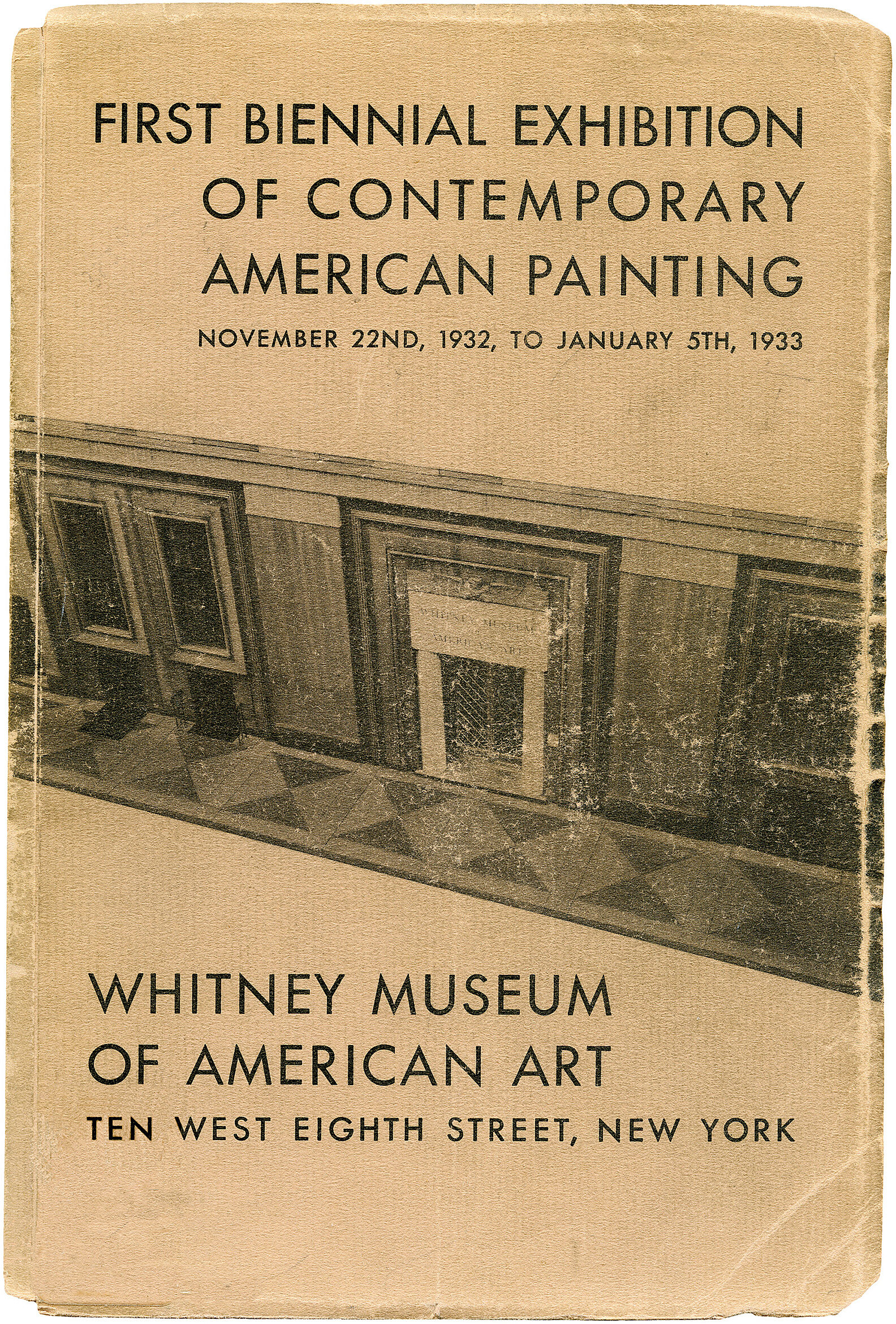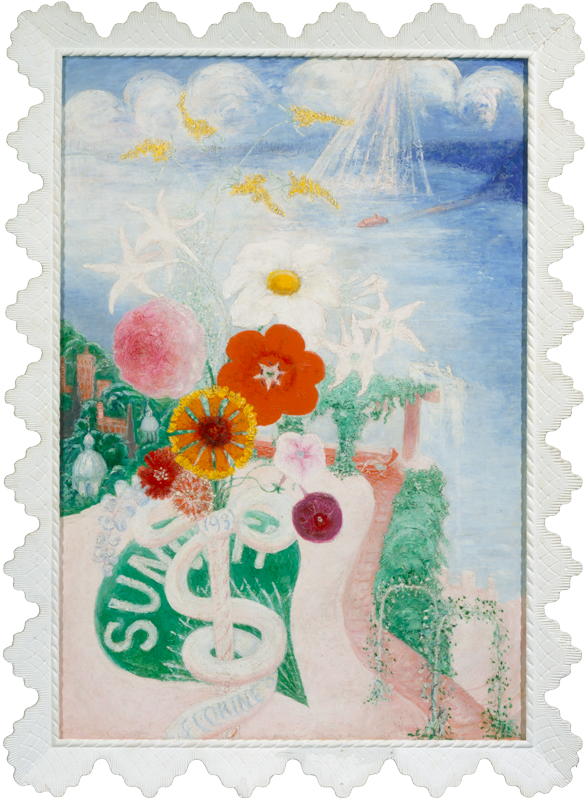Florine Stettheimer
1871–1944
A painter, poet, and designer, Florine Stettheimer was a central figure in the modernist avant-garde circles of New York between the two world wars. She began her formal training at the Art Students League in 1892 and continued studying art in Europe, where she absorbed Symbolist and Post-impressionist styles and developed a unique figuration that drew on the ornamentality of Art Deco patterns. With war impending, Stettheimer returned to New York in 1914 and soon began hosting a salon with her two sisters in their Upper West Side apartment. The salon cultivated a vibrant community of artists, literati, and European expatriates, many of whom appear in Stettheimer’s portraits, including Marcel Duchamp, Man Ray, Charles Demuth, Edward Steichen, and Carl Van Vechten.
Stettheimer created fantastic urban scenes in a decorative style that was, in many ways, opposed to the abstract and geometric forms prevalent in the 1920s and 1930s. Sun, for example, depicts an airy riverside promenade or rooftop with a towering bouquet of flowers radiating from its center. Rendered in curvaceous lines and intense, saturated colors, the flowers are a powerful focus of the scene and, with “Florine” written on the bow that snakes around the bouquet like a vine, suggest a stand-in for the artist herself. Indeed, Stettheimer picked a bouquet of flowers for herself each year on her birthday, and flowers often appear in her work as a kind of self-portraiture. Because she exhibited her paintings only rarely during her lifetime and refused to sell any, Stettheimer remained in relative obscurity for much of the twentieth century.
Dana Miller and Adam D. Weinberg, Handbook of the Collection (New York: Whitney Museum of American Art, 2015), 367.
Introduction
Florine Stettheimer (August 19, 1871 – May 11, 1944) was an American modernist painter, feminist, theatrical designer, poet, and salonnière.
Stettheimer developed a feminine, theatrical painting style depicting her friends, family, and experiences in New York City. She made the first feminist nude self-portrait and paintings depicting controversies of race and sexual preference. She and her sisters hosted a salon that attracted members of the avant-garde. In the mid-1930s, Stettheimer created the stage designs and costumes for Gertrude Stein and Virgil Thomson's avant-garde opera, Four Saints in Three Acts. She is best known for her four monumental works illustrating what she considered New York City's "Cathedrals": Broadway, Wall Street, Fifth Avenue, and New York's three major art museums.
During her lifetime, Stettheimer exhibited her paintings at more than 40 museum exhibitions and salons in New York and Paris. In 1938, when the Museum of Modern Art sent the first American art exhibition to Europe, Stettheimer and Georgia O'Keeffe were the only women whose work was included. Following her death in 1944, her friend Marcel Duchamp curated a retrospective exhibition of her work at the Museum of Modern Art in 1946. It was the museum's first retrospective exhibition of work by a woman artist. After her death, Stettheimer's paintings were donated to museums throughout the United States. In addition to her many paintings and costume and set designs, Stettheimer designed custom frames for her paintings and matching furniture, and wrote humorous, often biting poetry. A book of her poetry, Crystal Flowers, was published privately and posthumously by her sister Ettie Stettheimer in 1949.
Wikidata identifier
Q5461886
Information from Wikipedia, made available under the Creative Commons Attribution-ShareAlike License . Accessed November 21, 2025.
Introduction
American artist and set designer, New York City.
Country of birth
United States
Roles
Artist, designer, painter, pastelist
ULAN identifier
500011029
Names
Florine Stettheimer, Stettheimer
Information from the Getty Research Institute's Union List of Artist Names ® (ULAN), made available under the ODC Attribution License. Accessed November 21, 2025.

